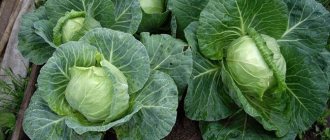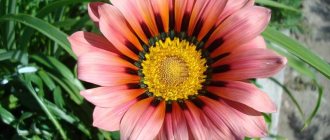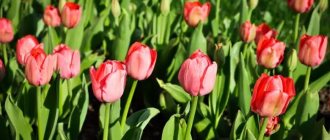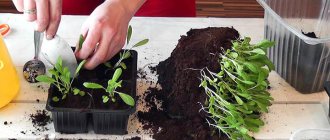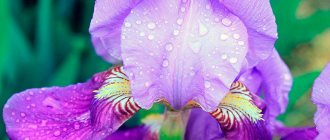Flower growers begin preparing for the new season in winter: in February, seedlings are sown from crops with a long development period. The peak of the seedling “harvest” occurs in March - April, because already in May you want to plant plants on the plot that are almost ready to delight you with their flowering. We will tell you in the article what flowers are planted in the spring and how.
Spring is the only possible time for planting annuals and some perennials
When to plant seeds and flower seedlings in open ground?
There is an opinion that annual flowers are planted in the ground at the end of spring, but this is not the only time when this can be done.
Planting annual plants is not particularly difficult, but it does have a few tricks. Early planting of annuals can lead to freezing of the seedlings, and late planting will not allow you to get a bright flower garden. It is very important to plant flowers in open ground at the right time, but it is equally important to adhere to some rules for planting seeds so that the seedlings are friendly:
When planting seeds in the ground before winter, you need to be prepared for the fact that in the spring about 30% of those planted will sprout. The land must be well cultivated and fertilized. You need to take care of the substrate for covering the seeds in advance.
Important! Seeds should be sown in places where they will grow next summer. Seedlings obtained in this way do not tolerate transplantation well.
You can sow from the end of October and almost until the snow. Even slight frosts are not a hindrance to this, only the soil should be well loosened by this time.
Flower growers claim that autumn planting allows you to get a blooming flowerbed 2-3 weeks earlier.
Many perennials require time in the cold when sown from seed. If planting is carried out in April, then the seeds are kept in the refrigerator for some time.
When planted before winter, perennials produce stronger seedlings, grow better, and bloom more abundantly. From biennials, before winter you can plant seeds of lavender, gentian, primrose, aquilegia, delphinium, hellebore.
Perennial and biennial plants, when sown in the spring, bloom only in the second year, but if they are sown before winter and protected from the cold in the spring, then you can get the first flowers this year.
In the spring, flower beds in the central zone begin to be sown from the end of March to the end of May.
The monthly breakdown for Central Russia looks like this:
In mid-summer (July) it is very good to plant:
But at this time it is better to plant already grown annual seedlings, for example, petunias or lilies, from boxes into the ground.
Many annual flowers are planted in boxes or pots, and after receiving the seedlings, they are planted in flower beds when the threat of zero temperatures has passed. You can also grow seedlings in boxes for late planting; in the heat, weak seedlings die, but after surviving it in boxes, they then bloom well in flower beds.
Planting seedlings in the ground in mid-July allows you to prolong the flowering of the flowerbed until frost. Planted in pots:
If seedlings are grown in pots for summer planting, then the seeds are sown taking into account the planting shift.
Using these simple methods, you can ensure that sowing seeds of annual flowers will produce friendly shoots. Plants will develop quickly, and flowering will be friendly and abundant:
Many flowers (especially perennial seeds) have low seed germination rates. To get healthy shoots, they are soaked in any solution to activate growth. After sprouting, the plants are immediately watered and fertilizers are applied after 2 weeks.
Source
Verbena
Verbena is a low-growing annual, very beautiful, blooms all summer until late autumn. Sowing seeds at home in early March. Flowering from July to October. The soils are fertile and loose. For better tillering, you need to pinch the crown. To prolong flowering, you need to constantly pick off wilted flowers. In dry weather, be sure to water.
Annual flowers have been delighting us with their riot of colors for a long time. Having selected the necessary flowers, you can admire this beauty all season long. Do you want a beautiful and original flower garden? Then click here!
melikedacha.ru
Getting ready to land
You can grow healthy, strong plants only from intact seeds. Therefore, before planting, it is important to sort them out and treat them with a weak solution of potassium permanganate. Then they are dried and sown. When selecting planting material for bulbous plants, you should take into account: the larger the bulb, the stronger the flower will be. To protect vegetation from fungal diseases, the bulbs must be kept in the foundation solution for 30 minutes.
For planting, you need to use a light and nutritious substrate. It is obtained by mixing humus or compost with deciduous soil, peat and sand in equal parts. The earth can be disinfected by dousing it with boiling water or spilling it with a solution of manganese.
Bulbous plants do not tolerate excess moisture well, so the substrate for them should be medium-heavy and easily allow moisture to pass through. It is better to provide flower beds with a drainage layer. To do this, a hole is dug, at the bottom of which a layer of expanded clay or broken brick is laid. Prepared nutrient soil is poured on top.
I. Flowers that can be planted in early spring
In order for plants planted at the beginning of the season to bloom in the first half of summer, it is better to first sow them in containers or boxes. And when the snow melts and the earth warms up a little, the seedlings can be transplanted into flower beds. In March you can start breeding:
Kochia
It is sown in a greenhouse or container. Furrows are made in the ground, 1 cm deep. The seeds are placed at intervals of 20 cm. After a month, the kochia can be transferred to open ground.
Petunias
Before planting, the seed material is mixed with sand and not sprinkled with soil after sowing; it is sprayed from a spray gun. When the first leaves appear, the seedlings are moved to separate pots. In April, planting is done in the flower garden. The interval between holes is 25-30 cm. No more than 2-3 petunias are planted in balcony boxes with a volume of 8-10 liters.
Marigold
You can plant it directly into the flowerbed in April-May. They will bloom by the end of June, beginning of July. But in order for them to bloom earlier, they need to be sown at home in containers in early spring. Then marigolds will delight you with their flowering in May - early June. Sow them in furrows 1 cm deep at intervals of 2-3 cm from each other, sprinkle and water. The sprouts are planted in separate containers after the appearance of 2-3 carved leaves. In 2-3 weeks they will be ready to be planted in their permanent place.
Viola (pansy)
In March it is planted with seedlings. It is necessary to lay drainage at the bottom of the container for seedlings. The sprouts sprout twice: after the first leaves appear and after 5 weeks. at a distance of 6 cm. The viola is moved into open ground in mid-May, maintaining a distance of 10-15 cm.
Snapdragon
In warm regions, you can immediately plant it in a flower bed. But in a prolonged spring, it is better to grow seedlings in early March. The seeds are mixed with sand and sprinkled with soil after planting. They dive after 3 leaves appear. They are transplanted into the garden in May at intervals of 15-50 cm (depending on the variety).
Delphinium
They are also sown in March in furrows half a centimeter deep at a distance of 7 cm. After a month, the sprouts are divided. The flowers are moved to their permanent location in May.
Kobeya
It is advisable to germinate kobeya before planting. The seeds are then placed in the soil, flat side down. Kobeya is replanted with the appearance of the first foliage. They are transferred to the flowerbed at the beginning of summer, 75-90 cm apart.
Also in March, cineraria, ageratum, annual asters, balsam, verbena, gazania, heliotrope, sweet pea, morning glory, calceolaria, cleome, purslane, arctotis, gypsophila, etc. are bred.
And some more information in the video:
Boxes with seeds planted for seedlings are covered with film or glass and placed in a warm, dark place. Periodically, the film needs to be lifted to ventilate the seedlings. This will help prevent the occurrence of fungal diseases. When the shoots appear, you need to remove the film from the container and move it to the windowsills. It should be noted that in order to successfully grow seedlings at this time, it is necessary to provide additional lighting and optimal temperature (20 - 23⁰C).
Choosing seedlings
There is nothing complicated in this matter, but I still advise you to pay attention to a few nuances:
Root system
From practice it follows that it is more advisable to buy seedlings with a closed root system (in peat or small plastic pots). It is advisable that there is one plant in each container (unless you are planning bouquet plantings in flower beds). It is very important that the roots are not overgrown or oppressed: if they do not have enough space for natural growth and they are intertwined in a ball, such a plant will be of little use. This is why many gardeners are afraid to purchase seedlings in cassettes with a minimum cell volume.
Diseases and pests
Do not hesitate to carefully examine each plant you purchase for the presence of diseases and pests, and feel the moisture content of the substrate in the container with your finger (it should under no circumstances be dry!). Stems and leaves must be fresh, strong, natural color for this species and variety, without spots, plaque or damage. Do not take specimens with unnaturally bright leaf colors and unusually thick stems and short internodes. It is obvious that a huge amount of fertilizers and stimulants were used in their cultivation. After planting in a flowerbed, without receiving the usual diet, such a plant will quickly lose its spectacular appearance and will probably die.
III. What to plant in late spring
In May, the seeds are sown directly into the ground, the grown seedlings are transplanted and existing plants are divided. This month you should breed:
Dahlias
The tubers are buried in pre-prepared, nutritious soil by 10 cm at intervals of at least 50 cm and sprinkled with dry substrate.
Acroclinum
It is sown in the ground and covered with a half-centimeter layer of soil. Shoots that are too dense are thinned out (15 cm interval).
Lavatera
It is also sown in May, after which it is watered with warm water. When the plants sprout, they need to be thinned out, since the minimum distance for their normal development is 15 cm.
Garden chamomile
Can be planted in the ground at the end of May, covered with film. After the crops emerge (after 2-3 weeks), it is removed. The place should be well lit, since in the shade daisies lose their decorative effect.
If you follow these rules and take into account the characteristics of each type of plant, then the flowers you plant will develop well and delight you with their flowering all season long.
Source
II. April seedlings
In April they plant:
- Levka (Mattiola) can be sown in the flower garden in the second half of April with a frequency of 20-25 cm;
- Nasturtium (for seedlings) is also planted in April. Places in peat cups. The seeds deepen by 2 cm. When the sprouts become stronger, they can be moved to the garden at a distance of 25-30 cm from each other. You can sow the seeds directly into the flower bed in May;
- The bindweed is soaked before planting, this will help it germinate faster. It is sown in April (at the end) after 20 -25 cm. You can prepare seedlings in March;
- Dimorphotheca breeds in April (in the beginning). It is planted as early as possible, so as not to damage the root, into separate containers. It is allowed to sow directly into the flower garden in May;
- Calendula. The seeds are buried 3 cm into the soil, maintaining a distance of 30-40 cm;
- Kentranthus is sown for seedlings at the end of April. After two weeks, the seedlings are planted, and they can be planted in a permanent place in June-July;
- Cosmea. Seeds can be scattered on the ground in 3-4 pieces. every 30-40 cm. Blooms in July - early August.
It is better to sow Matiolla in a permanent place - replanting is contraindicated for it. Nasturtium, ornamental bindweed, dimorphotheca can be grown by sowing seeds for seedlings
When planting bulbs, it is important to position them correctly in the holes: the top should point straight up.
Timing for planting flowers with seeds
Depending on the variety and varieties of flowers, certain deadlines may be observed. When planting flowers in open ground, it is important to consider the flowering period.
Landing in May
Spring planting of flowers is carried out for varieties that have an early flowering period. Most often, seeds are planted in mid-May, when the soil has warmed up and the likelihood of a drop in temperature is reduced.
Before planting, it is important to properly prepare the soil. Preparations begin in mid-April. The soil is dug up and all the necessary nutrients are added.
Planting flowers in the ground in May is necessary for varieties that do not tolerate frost and are classified as annuals. Such crops bloom most often in mid-summer.
Summer landing
In summer, flowers are planted in the following cases:
What flowers to plant in the ground in spring: 10 suitable types
A beautiful flower garden is always pleasing to the eye. Therefore, housewives begin gardening work as early as possible in order to enjoy the lush flowering for longer. With proper selection of plants, a flower bed or flower garden will bloom continuously for several months, even with minimal care. Let's figure out how to make seedlings and what flowers to plant in the ground in spring to get the best results.
Soil preparation
Before planting, dig up the soil and apply fertilizer. The soil needs to be dug up to a depth of 30 cm. It is advisable to do this not just before planting, but a little earlier so that it settles.
Sand, peat, and humus are added to heavy clay soil to improve its structure. Infertile sandy soils are enriched with humus.
Excess fertilizer is not always beneficial. In rich soils, many plants grow well with leaves and bulbs at the expense of flowering.
Spring planting methods
Single and perennial crops are planted in the ground in the spring. The first ones quickly take root and after two to three months they are already actively blooming. Perennials may not bloom in the first year, this is normal. Three methods are used for planting in the spring months.
Seedlings
A labor-intensive and expensive technique, but it gives the best results. The flowering period begins earlier and lasts longer. Seedlings are sown from January to early April. The exact period depends on the culture and climatic characteristics of the area. This can be clarified on the seed package. Grown-up seedlings with their first true leaves are plucked, that is, transplanted into individual cups or other containers. When the last frost has passed, they are transferred to a prepared place in the flower garden.
Seedless
Sowing is carried out in the ground. Its timing is determined by the variety, weather conditions and climate of the area. Thus, cold-resistant crops are sown as early as the third week of April. Heat-loving ones much later, after about a month. The seed is planted in soil prepared in advance. Small and medium ones are placed in grooves, large ones in small nests. The depth of planting depends on the size of the seed. It should not be less than two or three times its diameter. The emerging shoots must be thinned out.
Dividing rhizomes
All perennial crops require regular division of the bush. The procedure is carried out to renew and rejuvenate them. In the spring, divide plants that bloom in autumn or summer. The rhizome is carefully dug up with a pitchfork, and an earthen ball is preserved so as not to damage the small roots. Divide them into parts. Each one is no smaller than an adult's fist. The presence of roots and buds is required. The sections are sprinkled with charcoal and replanted.
What flower beds to make from annual plants
It is very convenient to plant flowers in flowerpots or containers - they can be placed along paths, by a pool or pond, on a balcony or threshold. In this case, changing the flower arrangement is very easy - you don’t need to dig it up and replant it, but simply move it from place to place. Flowers growing this way require less attention and are easier to care for than those growing in the garden. Petunia, fuchsia, viola, lobelia, nasturtium - beautiful cascades are made from these flowers, using several flower pots along with floor flowerpots, it looks very decorative. They decorate balconies and windows.
Creative owners plant flowers not only in special flowerpots, but also use broken dishes, old shoes (the viola looks touching), bedside tables, even cars. You can put a pot somewhere, and simply fill some container with soil and plant annual flowers. Such unusual flower beds look very decorative; they can be moved from place to place, decorating it situationally. You can’t plant a shady corner of the garden with flowers (although there are shade-tolerant, even shade-loving ones), but you can simply bring in these modular flower beds for a few hours. This option is good for landscaping a balcony. For modular flower beds decorating balconies, verandas, and thresholds, different varieties of petunias and violas are perfect.
Designers use the word “edge” to describe a motley border, which most often has a regular geometric shape. They can be one-sided (in the background of the diagram there are tall plants, and closer to the viewer they are reduced to low-growing violas), double-sided (tall plants are planted in the center, and medium-sized ones on both sides, followed by low-growing ones). Round ridges are created according to the same principle. Calendula, which blooms until frost, is often used.
Mixborders are by far the most popular type of flower garden. It consists of different types of plants that bloom at different times, thereby creating the effect of continuous flowering. White, yellow, red, orange, blue, purple flowers can grow side by side and replace each other over time. It is very important to select plants not only according to flowering time and care, but also according to color and size combinations. Very often they use yellow or orange calendula, double asters, viola, matiola - they like to decorate balconies and dachas.
Color spots are created from annuals of the same color.
A group of yellow calendulas or yellow marigolds in the middle of a green lawn looks very decorative. Bright salvias or zinnias are often planted this way. Shade-tolerant violas can hide in the shade of the garden in a small spot in the middle of the grass. A single plant is called a tapeworm; it always becomes the center of the composition. Such plantings are created against the backdrop of a lawn or low-growing ground cover plants. Castor beans and datura look very decorative. In contact with
Planting flowers at the dacha in spring: calendar for preparing seedlings and planting work
The choice of varieties and timing of their sowing depends on the weather and climatic conditions of the area. Detailed information about the crop and the characteristics of its cultivation is indicated on the package of seeds. We propose to get acquainted with the list of what flowers are planted in the spring at the dacha, with the distribution of planting dates by month.
Planting of seedlings begins.
Petunia
Grown by seedlings. The seeds are small; before sowing they are mixed with sand. The mixture is sown and not covered with substrate. Instead of watering, it is sprayed with water from a spray bottle. After the first leaves appear, the seedlings dive. Planted in the ground in April. The normal distance between the stems is 250-300 mm. If you plan to grow petunias in boxes, no more than 3 flowers are planted per 8-10 liters of soil.
Marigold
Planting in the ground is possible in April or May, but to speed up flowering, seedlings are grown. Shallow furrows are made in the boxes, where the seeds are placed with a distance of 20-30 mm between them. Cover with soil, tamp down and water well. After two or three true “carved” leaves appear, the seedlings dive. They are transferred to the flowerbed after 18-20 days. Marigolds grown in this way will delight you with their flowering at the end of May.
Snapdragon
In the southern regions it is better to sow it in the ground. In areas with a cold, long spring, they grow seedlings. Before planting in the soil, the seeds are mixed with sand, sprinkled with soil and watered. They dive after the appearance of the third true leaf. Transplanted into a flower garden after one and a half to two months. Large varieties - at a distance of 50 cm from each other, small ones - 15 cm.
Viola or pansy
Seedlings are sensitive to excess moisture, so drainage must be placed at the bottom of the box. Seedlings dive twice. The first time after the appearance of two or three true leaves. The second time - after five weeks. If you plan to plant the sprouts in a box, the distance between them should be at least 60 mm. After mid-May, the viola is transferred to a flowerbed. There should be at least 100-150 mm between bushes.
Delphinium
There are one and many years. In the latter case, flowering occurs only in the second year of life. Annuals are often sown in the ground, provided the weather allows it. Delphinium is grown as seedlings. Seeds are sown in a container in small grooves. They are planted in separate containers when the seedlings become stronger, approximately 25-30 days after germination. They are transferred to their place in the flower garden in late May.
In March, you can sow other plants for seedlings: verbena, purslane, balsam, ageratum, heliotrope, morning glory, cineraria, annual aster, etc.
April
In most regions, by the third week of the month it is already possible to sow frost-resistant annuals and perennials in open ground. But if the warmth comes late, it is better to sow and grow seedlings. Let us list which flowers are planted in open ground in spring.
Eschszolzia
Calendula
At the same time a decoration for the garden and a medicine. 10-14 days before sowing, prepare the soil and add fertilizers to it. The seed is placed in grooves 1-2 cm deep. There should be 20-25 cm between them. If calendula is grown for medicinal purposes, the distance between the rows can be 8-10 cm, for decorative ones 30-40 cm. 15-20 days after appearance seedlings are thinned out. Moreover, the extra ones are quite viable, they can be moved to another flowerbed. Calendula begins to bloom closer to mid-summer.
Decorative cabbage
A very beautiful and unpretentious plant. Prefers sandy loams and loams rich in humus. Frost resistant. It can grow in slight shade, but in full sun the color of the leaves is brighter. The seeds are germinated. Wrap in a cloth moistened with a solution of organic fertilizer. The hatched seeds are placed on the ground and covered with a 1 cm thick layer of earth. When sowing, it is necessary to take into account that the bushes grow in diameter up to 60 cm. At the stage of 3-4 leaves, the seedlings are thinned out.
During this period, clarkia, adonis, cornflowers, sweet peas, morning glory, baccaria, Chinese carnation, gypsophila, snakehead, mignonette, flax, poppies and others are sown.
In the last month of spring, seedlings are transferred to flower beds, heat-loving flowers are sown and tuberous perennials are divided. Some bulbous plants, such as tulips, can be planted in the ground. It is important that the soil warms up well enough. They take root well and are already blooming in about a month. Other bulbs, such as crocuses, are too early to plant. Spring-flowering varieties are replanted from July to September, autumn-flowering varieties from June to August. Let's list which perennial flowers to plant in late spring.
Dahlias
They prefer fertile, loose soil and plenty of light. They bloom less luxuriantly in shaded areas. If the ground is too wet, drainage is placed at the bottom of the hole when planting. Tubers are treated with a weak solution of potassium permanganate or phytosporin. To activate growth, soak in stimulants such as “Kornevin”, “Epina”. Holes are dug according to a pattern of 40x30 cm for low varieties and 70x50 cm for large ones. The tuber is placed in a hole, covered with soil, covering the root collar no more than 3-4 cm. Watered and mulched.
Anemones
All varieties are demanding on soil. It should be fertile, loose, breathable with an alkaline reaction. Strong drafts are unacceptable. Light levels vary depending on the type of anemone. Sprouted tubers are planted. They are first soaked in water, then placed in a damp substrate, sphagnum moss, rags or cotton wool. After pecking the sprouts, the tubers are transferred to the prepared hole. They are buried 6-7 cm, lightly sprinkled with earth. Planting pattern 7x7 cm.
The list of flowers that can be planted in late spring can be continued: acroclinum, lavatera, garden chamomile, chrysanthemums, lilies, asters, bells, etc. Plants must be selected taking into account the climatic characteristics of the area and the conditions that the grower can provide. The choice of flowering crops is very wide. Among them, both a beginner and an experienced gardener can easily select varieties to decorate their flower garden.
Pros of annuals
Each plant planted in a garden plot or local area has its own advantages and its own role in the design. Perennials are advantageous because they are less demanding in terms of care, they grow in one place for several years and there is no need to plant annually; various “long-lasting” compositions can be created on their basis.
Annuals have other advantages:
- a large selection of plants with different flowering periods, flower colors, growing conditions;
- seed material can be harvested independently;
- many reproduce by self-sowing;
- grown by seedlings and without seedlings, while most perennials are best grown by seedlings with mandatory seed stratification;
- sprout quickly after sowing - within 7-10 days;
- with their help, the design of the site is changed annually;
- allow you to fill “voids” in the area without damaging garden plants;
- attract pollinating insects;
- There are many options for use - for cutting, designing paths, ridges, terraces, gazebos, flower beds, creating bright accents, container gardens, decorating unsightly buildings, fences;
- can be combined with garden and garden crops, whereas neighbors for perennials must be chosen carefully;
- bloom quickly, most bloom until cold weather;
- do not require fertilizing if the soil is fertilized during planting;
- The soil is dug up annually, weeds are removed, and fertilized, which is important in preserving fertility.
Related article:
The proud charm of the garden: 6 of the most beautiful varieties of calla lilies that are grown outdoors
